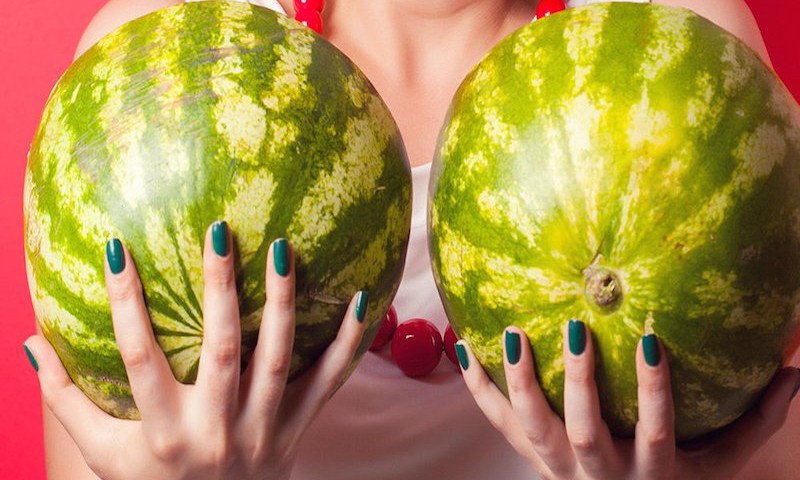Dr. Nesochi comments on a reason why your breasts may feel lumpy on Women’s Health.

5 Totally Normal Reasons Why Your Boobs Feel Lumpy
Cancer isn’t the only thing that causes bumps.
Feeling a lump in your breast can lead to a full-blown freak out. But there are a number of non-cancerous reasons why your boobs might be bumpy. “It’s not just about breast cancer,” says Sherry Ross, M.D., ob-gyn, women’s health expert at Providence Saint John’s Health Center in Santa Monica, and author of the forthcoming book She-ology. “Getting to know your breast tissue and being familiar with what is normal for you will help you know when something is abnormal.” Here are five culprits to keep an eye out for:
1. You Have Dense Breasts
A little anatomy lesson: Breasts are made up a combination of fatty tissue and connective tissue. Women with denser breasts have more of the connective tissue and less fatty tissue. While breast density is really about how a breast appears on a mammogram, “some young women have dense breasts that can feel lumpy,” explains Parvin F. Peddi, M.D., of the UCLA division of hematology and oncology. According to the University of Rochester Medical Center, two-thirds of pre-menopausal and one-quarter of post-menopausal women have dense breast tissue. On a traditional mammogram, this can be very difficult to tell apart from cancer, making detection trickier. “What’s important is to know whether a lump is new or old or whether it’s changing,” says Peddi. “A regular breast self-examination is best so a woman can get a sense of what her individual breasts feel like.”
2. You Have Non-Cancerous Tumors
One of the most common breast lump culprits is fibroadenoma, says Ross. According to the American Cancer Society (ACS), fibroadenoma are benign (a.k.a. non-cancerous) tumors made up of both glandular and connective breast tissue that are most common in women in their twenties and thirties. While fibroadenoma can vary in size—from microscopic to as big as an apricot—often times they are described as feeling firm, smooth, or rubbery and having a well-defined shaped, like a marble, says Ross. While they are harmless, if you have multiple fibroadenomas or they continue to grow in size, they may begin to impact the look and shape of your breasts and your doctor may recommend removing them.
3. You Have Cysts
Changes in the breast tissue caused by fibrosis and/or cysts are common and benign. “Fibrocystic breast changes affect about 60 percent of women,” says Ross. “A lot of times you’ll notice them where an underwire bra would hit.” Fibrosis is the name for a dense collection of fibrous tissue, the same kind of tissue that ligaments and scar tissue are made of. Areas of fibrosis may feel rubbery, firm, or hard to the touch. Meanwhile, cysts are round, movable, fluid-filled lumps most common in women in their forties. While both may get larger and more tender near your menstrual cycle, they aren’t caused by it. “These can get worse on your period and then improve, but they don’t go away,” says Ross. “We can still see them on an ultrasound.” Luckily, they are benign and can be improved by limiting your intake of caffeine and nicotine—common triggers that aggravate them, making them even more pronounced.
4. You Have a Blood Clot
Although rare, a lump in your breasts can also be caused by Mondor’s disease. “[This] occurs as a result of a superficial thrombophlebitis (i.e. blood clot in the vein just beneath the skin) affecting the breast region,” says Nesochi Okeke-Igbokwe, M.D., attending physician at NYU Langone Medical Center. “One may feel a cord-like hardened lump of the breast which can be painful.” While the rare condition can affect any of the veins in the breast, it most commonly affects those on the outer side or under the nipple. It can also be caused by trauma to the breast region, overly vigorous exercise, or wearing a bra that is too tight. The good news is that it generally goes away on its own.
5. You Have Your Period
While the hormonal changes of your period can aggravate many of these other breast issues, your period itself will also cause your breast to swell and often feel…different. According to the National Cancer Institute, it’s normal to feel lumps and bumps during your menstrual cycle thanks to extra fluid in your chest due to hormones. (This should resolve itself once your time of the month is over.) Slow clap. Thanks, Aunt Flo.
The Bottom Line
Know thy breasts. Learn how to do a proper breast self-exam and check your breasts every month after your period (to avoid those hormonal changes that can impact breast tissue), says Ross. And if you’re concerned, don’t hesitate to make an appointment to see your doctor. While there are many breast lumps and bumps that are benign, more than 300,000 new cases of breast cancer are estimated to be diagnosed in 2016, according to the ACS. “Get examined if you notice a new lump, no matter your age,” says Peddi. “Breast cancer when discovered early is very treatable.”
Learn more at Women’s Health